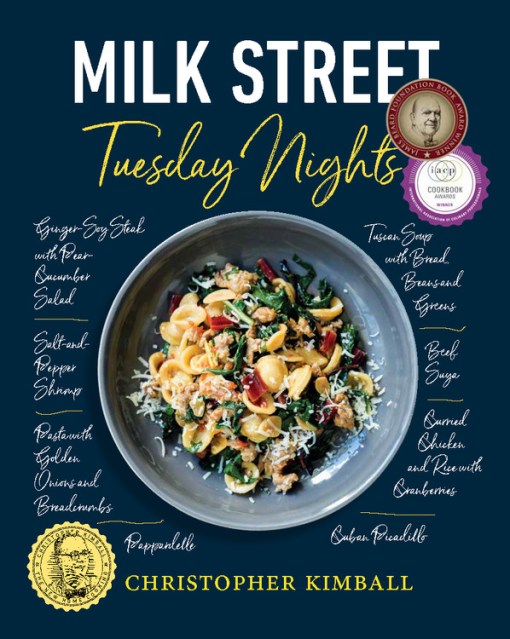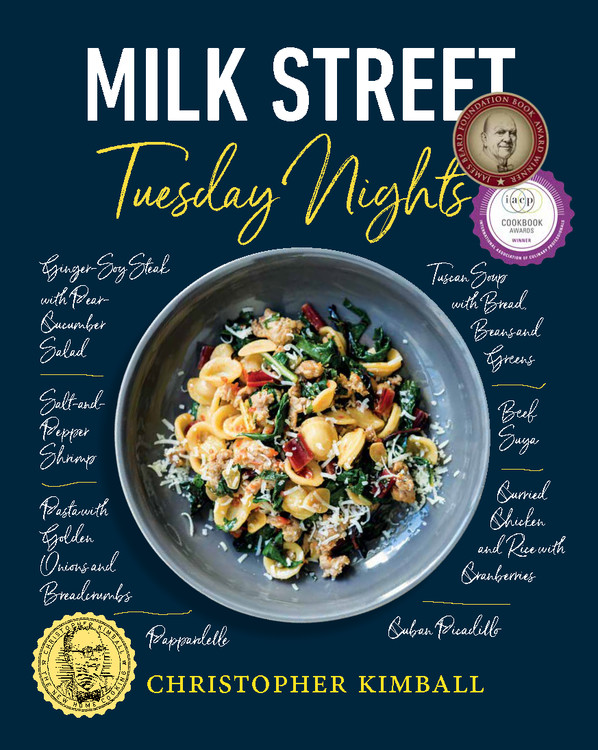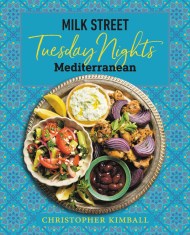Promotion
Use code BEST25 for 25% off storewide. Make sure to order by 11:59am, 12/12 for holiday delivery!
By clicking “Accept,” you agree to the use of cookies and similar technologies on your device as set forth in our Cookie Policy and our Privacy Policy. Please note that certain cookies are essential for this website to function properly and do not require user consent to be deployed.
Milk Street: Tuesday Nights
More than 200 Simple Weeknight Suppers that Deliver Bold Flavor, Fast
Contributors
Formats and Prices
- On Sale
- Oct 16, 2018
- Page Count
- 416 pages
- Publisher
- Voracious
- ISBN-13
- 9780316437318
Price
$40.00Price
$50.00 CADFormat
Format:
- Hardcover $40.00 $50.00 CAD
- ebook $16.99 $21.99 CAD
This item is a preorder. Your payment method will be charged immediately, and the product is expected to ship on or around October 16, 2018. This date is subject to change due to shipping delays beyond our control.
Buy from Other Retailers:
One of Epicurious’ Greatest Home Cooks of All Time delivers creative, delicious weeknight dinners with this quick and easy cookbook for beginner cooks and foodies alike.
- Miso-Ginger Chicken Salad
- Rigatoni Carbonara with Ricotta
- Vietnamese Meatball Lettuce Wraps
- Peanut-Sesame Noodles
- White Balsamic Chicken with Tarragon
- Seared Strip Steak with Almond-Rosemary Salsa Verde
- Chocolate-Tahini Pudding
Tuesday Nights is organized by the way you cook. Some chapters focus on time–with recipes that are Fast (under an hour, start to finish), Faster (45 minutes or less), and Fastest (25 minutes or less). Others highlight easy methods or themes, including Supper Salads, Roast and Simmer and Easy Additions. And there’s always time for pizza, tacos, “walk-away” recipes, one-pot wonders, ultrafast 20-minute miracles, and dessert.
Genre:
-
Winner of the James Beard Foundation Award and the IACP Award for Best General Cookbook
One of the Best Books of the Year: The Atlantic, Amazon, Food52, NPR, Washington Post, Barnes & Noble, Boston Globe, Milwaukee Journal-Sentinel, Philadelphia Inquirer, Seattle Times, New Hampshire Public Radio
-
One of the 10 Cookbooks Our Readers Couldn't Live WithoutFood52
-
"A well-tested book that turns the Tuesday-night recipe on its head... uses bright and bold flavors and smart techniques that allow even a modestly competent cook to eat well in the middle of the week... my Tuesday-night game was never going to be the same."Kim Severson, New York Times
-
"Milk Street: Tuesday Nights stands above the rest... offers scores of inventive, delicious, and swift recipes ideal for any night of the week... On almost every page is a dish I'm dying to try... Coming in at a little more than 400 pages with gorgeous full-color photographs for each entry, the book has enough to keep an enterprising cook busy for weeks."Portland Press-Herald
-
"As usual, Chris Kimball has the answer: replace hours of culinary labor with dramatic, high-flavor ingredients... it almost makes you wish every day could be Tuesday."NPR
-
"Easy weeknight recipes with an international twist... Tuesday Nights starts with big-flavor ingredients and combines them to maximum effect."Boston Globe
-
"Underscores how home cooks are changing up weeknight meals with flavors from around the world... for millions of home cooks, the thrill of the global pantry is the next big step in the kitchen... getting at the best and most efficient method that the home cook can duplicate... These are recipes, Milk Street guarantees, that work.Houston Chronicle
-
"A solid, eclectic group of recipes that is built for working into your own weeknight rotations."Washington Post
-
"Around-the-world meals you can actually pull off on a weeknight!"Woman's Day
-
"A celebration of joyful any-day meals that'll give your routine a welcome boost."Tasting Table
-
"Stress-free cooking... There's plenty to tempt even tired cooks, including a rich, flavorful Sausage and Mushroom Ragu with Pappardelle, lots of twists on no-fuss roasted chicken thighs requiring minimal active cooking time, and a bunch of satisfying dinner salads."Christian Science Monitor
-
"For the global adventurer... Milk Street: Tuesday Nights is a delicious gem... [and] the recipes are accessible for any skill level."Minneapolis Star-Tribune
-
"A cookbook for the rest of us... packed with instructions for making delicious dinners during the week."Monterey Herald
-
"Delivers 200+ recipes for palate-awakening meals... Generously seasoned with international spices and pantry staples, these speedy stir fries, pastas, pizzas, and other dishes will satisfy adventurous home cooks... Milk Street's globally inspired approach to fast cooking is anything but bland. Turn to their latest for flavorful weeknight winners."Library Journal
-
"Wondering what to cook on a weeknight that could possibly be faster or better than takeout? Look no further... [than] this decidedly inventive, omnivorous, and international collection... the 200-plus recipes, each under a page and accompanied by a full-page photo, include start-to-finish (active and inactive) time estimates and, when applicable, 'don't' notes that discourage common pitfalls."Booklist
Newsletter Signup
By clicking ‘Sign Up,’ I acknowledge that I have read and agree to Hachette Book Group’s Privacy Policy and Terms of Use







